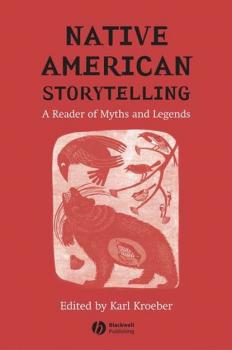Группа авторов
Список книг автора Группа авторовEmpires and Colonies
Empires and Colonies provides a thoroughgoing and lively exploration of the expansion of the seaborne empires of western Europe from the fifteenth century and how that process of expansion affected the world, including its successor, the United States. Whilst providing special attention to Europe, the book is careful to highlight the ambivalence and contradiction of that expansion. The book also illuminates connections between empires and colonies as a theme in history, concentrating on culture while also discussing the rich social, economic and political dimensions of the story. Furthermore, Empires and Colonies recognizes that whilst a study of the expansion of Europe is an important part of world history, it is not a history of the world per se. The focus on culture is used to assert that areas and peoples that lack great economic power at any given time also deserve attention. These alternative voices of slaves, indigenous peoples and critics of empire and colonization are an important and compelling element of the book. Empires and Colonies will be essential reading not only for students of imperial history, but also for anyone interested in the makings of our modern world.
Native American Storytelling
The myths and legends in this book have been selected both for their excellence as stories and because they illustrate the distinctive nature of Native American storytelling. A collection of Native American myths and legends. Selected for their excellence as stories, and because they illustrate the distinctive nature of Native American storytelling. Drawn from the oral traditions of all major areas of aboriginal North America. Reveals the highly practical functions of myths and legends in Native American societies. Illustrates American Indians’ profound engagement with their natural environment. Edited by an outstanding interpreter of Native American oral stories.
The English Handbook
The English Handbook: A Guide to Literary Studies is a comprehensive textbook, providing essential practical and analytical reading and writing skills for literature students at all levels. With advice and information on fundamental methods of literary analysis and research, Whitla equips students with the knowledge and tools essential for advanced literary study. Includes traditional close reading strategies integrated with newer critical theory, ranging from gender and genre to post-structuralism and post-colonialism; with examples from Beowulf to Atwood, folk ballads to Fugard, and Christopher Marlowe to Conrad’s Marlow Draws on a wide range of resources, from print to contemporary electronic media Supplies a companion website with chapter summaries, charts, examples, web links, and suggestions for further study
Uses of Literature
Uses of Literature bridges the gap between literary theory and common-sense beliefs about why we read literature. Explores the diverse motives and mysteries of why we read Offers four different ways of thinking about why we read literature – for recognition, enchantment, knowledge, and shock Argues for a new “phenomenology” in literary studies that incorporates the historical and social dimensions of reading Includes examples of literature from a wide range of national literary traditions
Globalization and Literature
This book presents a state-of-the-art overview of the relationship between globalization studies and literature and literary studies, and the bearing that they have on each other. It engages with the manner in which globalization is thematized in literary works, examines the relationship between globalization theory and literary theory, and discusses the impact of globalization processes on the production and reception of literary texts. Suman Gupta argues that, while literature has registered globalization processes in relevant ways, there has been a missed articulation between globalization studies and literary studies. Examples are given of some of the ways in which this slippage is now being addressed and may be taken forward, taking up such themes as the manner in which anti-globalization protests and world cities have figured in literary works; the ways in which theories of postmodernism and postcolonialism, familiar in literary studies, have diverged from and converged with globalization studies; and how industries to do with the circulation of literature are becoming globalized. This book is intended for university-level students and teachers, researchers, and other informed readers with an interest in the above issues, and serves as both a survey of the field and an intervention within it.
The Public Intellectual
New essays by prestigious thinkers such as Edward Said, Bruce Robbins, Jacqueline Rose, and Stefan Collini on the public role of writers and intellectuals.
Adventures in Realism
Adventures in Realism offers an accessible introduction to realism as it has evolved since the 19th century. Though focused on literature and literary theory, the significance of technology and the visual arts is also addressed. Comprises 16 newly-commissioned essays written by a distinguished group of contributors, including Slavoj Zizek and Frederic Jameson Provides the historical, cultural, intellectual, and literary contexts necessary to understand developments in realism Addresses the artistic mediums and technologies such as painting and film that have helped shape the way we perceive reality Explores literary and pictorial sub-genres, such as naturalism and socialist realism Includes a brief bibliography and suggestions for further reading at the end of each section
Licensing Best Practices
A definitive resource for professionals in licensing and technology management In this comprehensive guide to licensing best practices, esteemed members of the Licensing Executives Society International offer in-depth discussion of a broad range of important topics in the field of licensing, including: * Licensing issues in Europe, Asia, Australia, the Middle East, South Africa, and Latin America * Technology valuation * Technology management consulting * Licensing agreements and strategic partnerships * The expansion of the licensing profession * Patent procedures and protection in Europe * Trade secrets law and intellectual property assets * Issues in copyright, software, and Web sites * Trademarks, trade names, and trade dress * Licensing in the biotechnology industry * Pharmaceutical licensing * University licensing trends * Technology rights that are financial assets and instruments * IC-based corporate carve-outs * Licensing and litigation * ADR
Staying with Conflict
Winner of the 2009 CPR Award for Outstanding Book In this groundbreaking book, Bernard Mayer, a pioneer in the field of conflict resolution, offers a new paradigm for dealing with long-term disputes. Mayer explains that when dealing with enduring conflict, mediators and other conflict resolution specialists need to move past the idea of how quickly they can resolve the conflict. Instead, they should focus on how they can help people prepare to engage with an issue over time. Once their attention is directed away from a speedy resolution to a long-term approach, new avenues of intervention become apparent.
The Rhetoric of RHETORIC
In this manifesto, distinguished critic Wayne Booth claims that communication in every corner of life can be improved if we study rhetoric closely. Written by Wayne Booth, author of the seminal book, The Rhetoric of Fiction (1961). Explores the consequences of bad rhetoric in education, in politics, and in the media. Investigates the possibility of reducing harmful conflict by practising a rhetoric that depends on deep listening by both sides.









